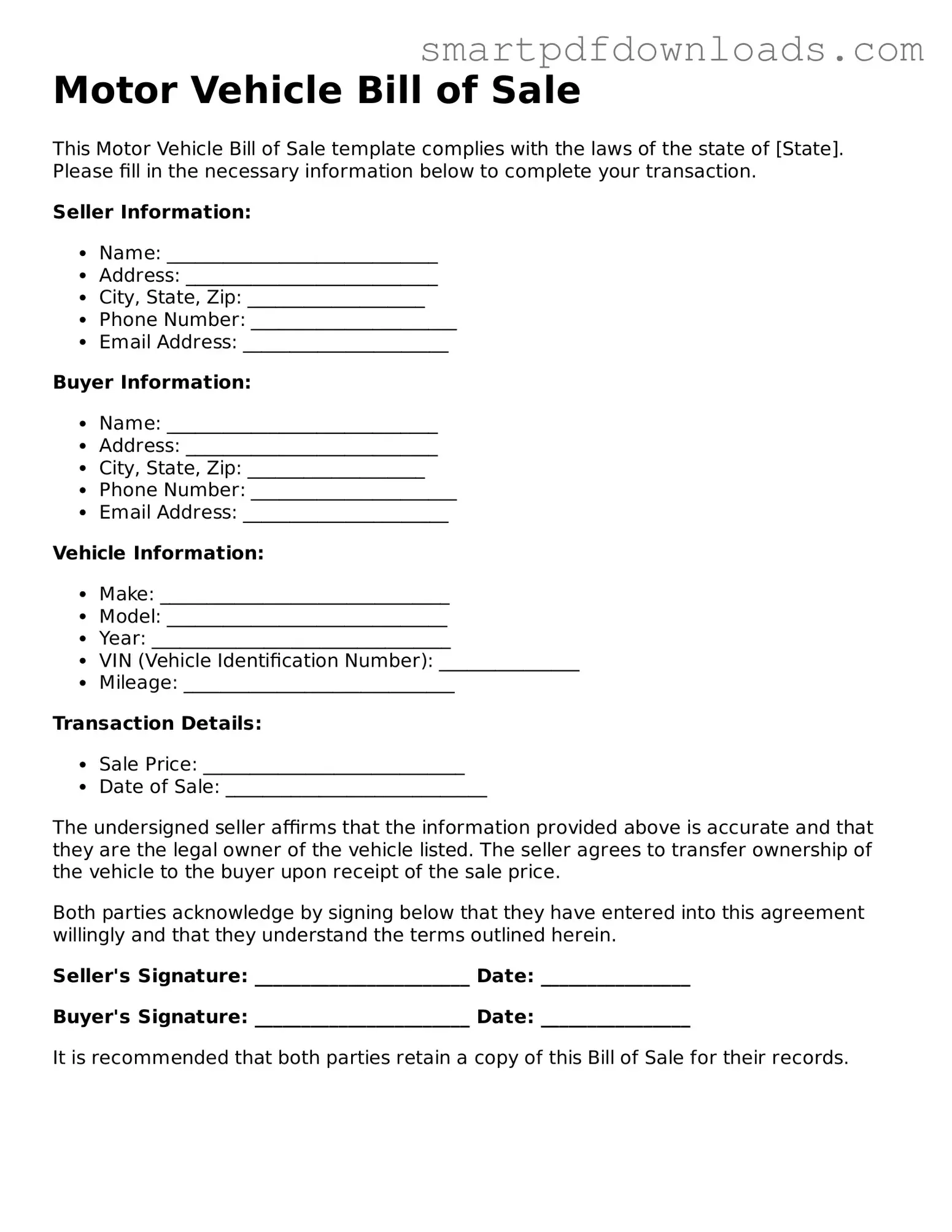Motor Vehicle Bill of Sale
This Motor Vehicle Bill of Sale template complies with the laws of the state of [State]. Please fill in the necessary information below to complete your transaction.
Seller Information:
- Name: _____________________________
- Address: ___________________________
- City, State, Zip: ___________________
- Phone Number: ______________________
- Email Address: ______________________
Buyer Information:
- Name: _____________________________
- Address: ___________________________
- City, State, Zip: ___________________
- Phone Number: ______________________
- Email Address: ______________________
Vehicle Information:
- Make: _______________________________
- Model: ______________________________
- Year: ________________________________
- VIN (Vehicle Identification Number): _______________
- Mileage: _____________________________
Transaction Details:
- Sale Price: ____________________________
- Date of Sale: ____________________________
The undersigned seller affirms that the information provided above is accurate and that they are the legal owner of the vehicle listed. The seller agrees to transfer ownership of the vehicle to the buyer upon receipt of the sale price.
Both parties acknowledge by signing below that they have entered into this agreement willingly and that they understand the terms outlined herein.
Seller's Signature: _______________________ Date: ________________
Buyer's Signature: _______________________ Date: ________________
It is recommended that both parties retain a copy of this Bill of Sale for their records.
